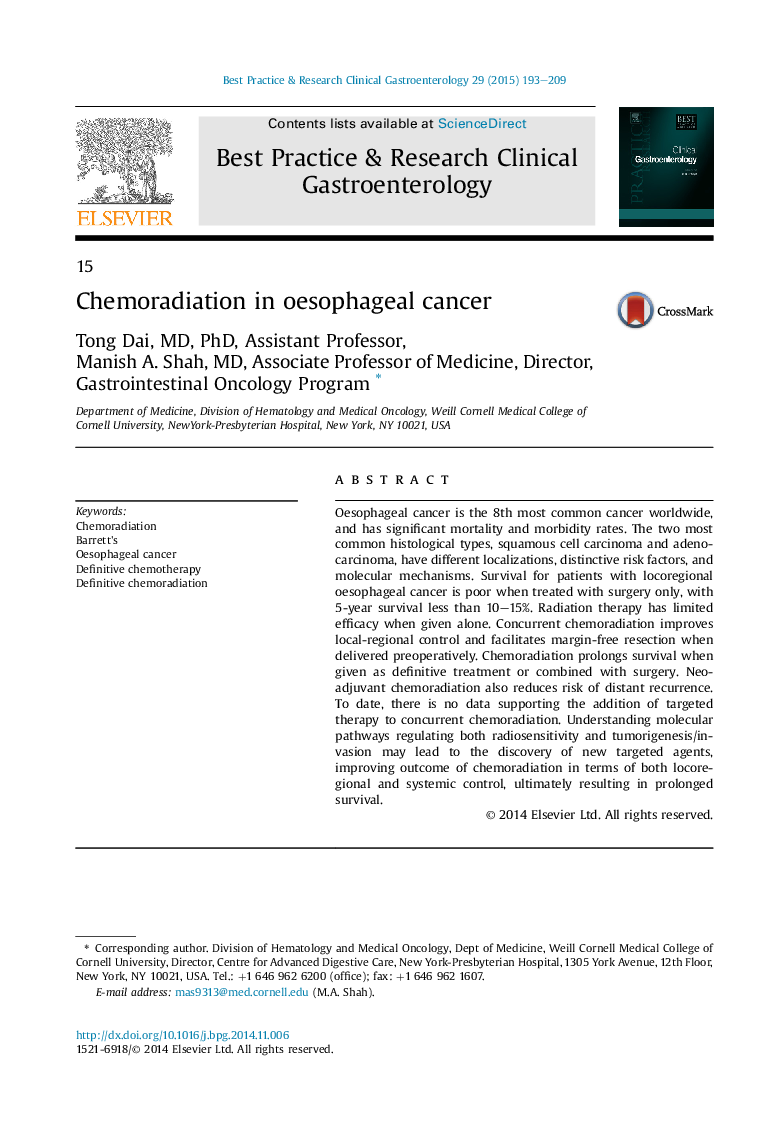| Article ID | Journal | Published Year | Pages | File Type |
|---|---|---|---|---|
| 3254420 | Best Practice & Research Clinical Gastroenterology | 2015 | 17 Pages |
Oesophageal cancer is the 8th most common cancer worldwide, and has significant mortality and morbidity rates. The two most common histological types, squamous cell carcinoma and adenocarcinoma, have different localizations, distinctive risk factors, and molecular mechanisms. Survival for patients with locoregional oesophageal cancer is poor when treated with surgery only, with 5-year survival less than 10–15%. Radiation therapy has limited efficacy when given alone. Concurrent chemoradiation improves local-regional control and facilitates margin-free resection when delivered preoperatively. Chemoradiation prolongs survival when given as definitive treatment or combined with surgery. Neoadjuvant chemoradiation also reduces risk of distant recurrence. To date, there is no data supporting the addition of targeted therapy to concurrent chemoradiation. Understanding molecular pathways regulating both radiosensitivity and tumorigenesis/invasion may lead to the discovery of new targeted agents, improving outcome of chemoradiation in terms of both locoregional and systemic control, ultimately resulting in prolonged survival.
